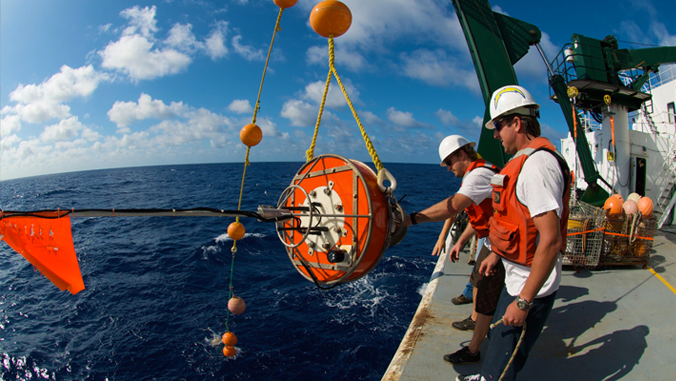
The 30th anniversary of the Hawaiʻi Ocean Time-series (HOT) program, based at the School of Ocean and Earth Science and Technology (SOEST) at the University of Hawaiʻi at Mānoa, is being celebrated with a virtual issue of Limnology and Oceanography. This volume of seminal papers from HOT, published by the Association for the Sciences of Limnology and Oceanography on biogeochemistry, ocean physics and plankton ecology, is available for public viewing.
Thirty years ago, on October 30, 1988, a team of scientists from UH established Station ALOHA (22°45′N, 158°W) as an open ocean observatory for physical, biogeochemical and ecological investigations. ALOHA is an acronym for A Long‐term Oligotrophic Habitat Assessment, the stated mission of the National Science Foundation‐supported HOT program.
Since then, scientists, engineers, students and technicians from around the world have embarked on more than 300 expeditions to observe and record both natural and human‐induced variations in ecosystem structure and function at this remote open ocean location.
“This virtual issue presents some of the key scientific discoveries made at Station ALOHA and published in Limnology and Oceanography over the past three decades,” said David Karl and Matthew Church, HOT directors, in the opening editorial of the special volume.
The American Society for Microbiology recently designated Station ALOHA as a Milestones in Microbiology Site, one of only 15 institutions, scientists or locations where significant contributions toward advancing the science of microbiology have been achieved.
See the SOEST website for the full story.
—By Marcie Grabowski

